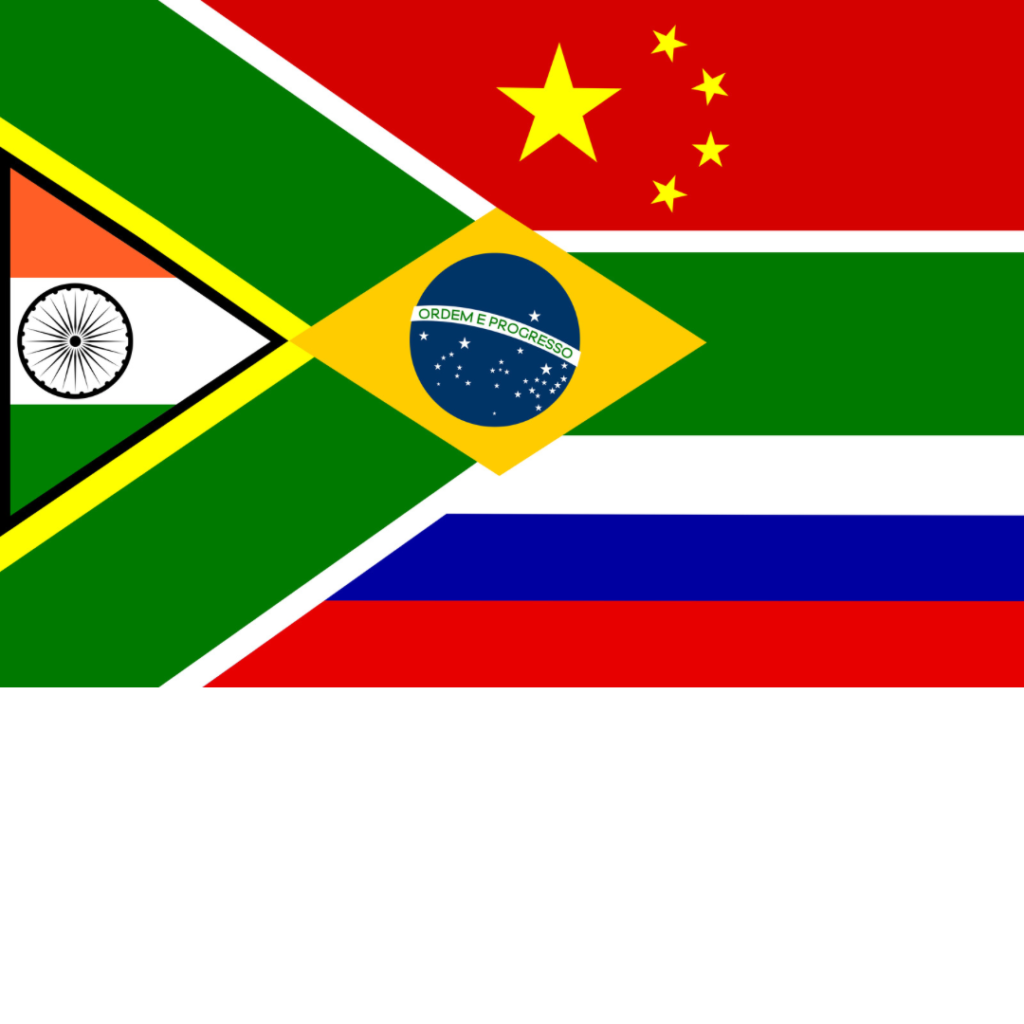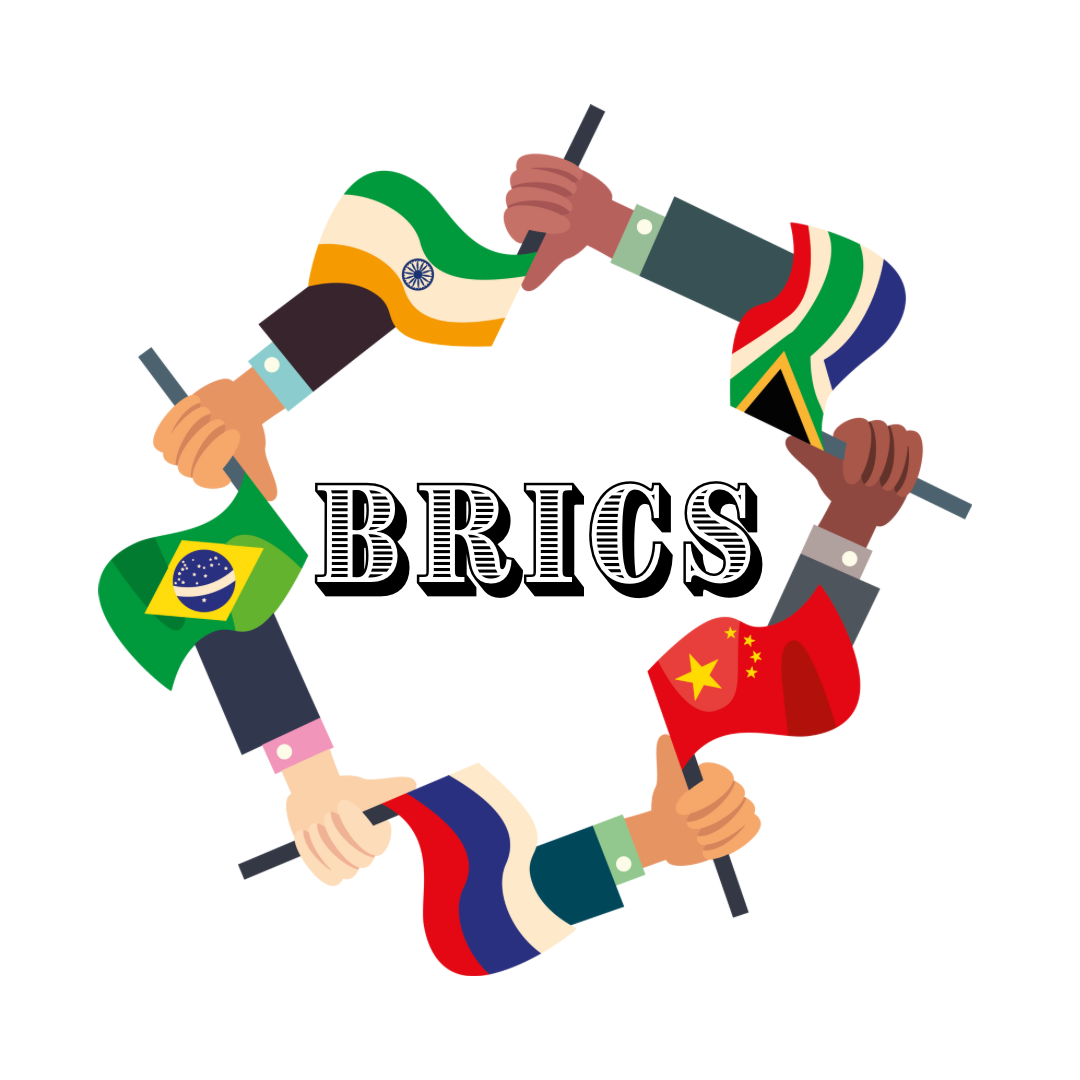What’s in the NEWS
Five countries officially joined the BRICS. It initially comprised of only five countries and now the number has increased.The countries which joined BRICS are Egypt, Ethiopia, Iran, Saudi Arabia, Argentina and the United Arab Emirates. But Argentina has did not accept the invitation to join BRICS.

Table of Contents
What is BRICS

BRICS, an acronym for Brazil, Russia, India, China, and South Africa, signifies a pivotal coalition of major emerging economies established to foster collaboration and mutual development. It is a loose alliance of developing countries.BRICS is not a formal organization and was established in 2006, with its inaugural summit held in Yekaterinburg, Russia, the organization has since evolved into a platform for diplomatic dialogue and strategic cooperation among its member states. Although BRICS lacks a permanent headquarters, its operations are decentralized, with summits and meetings hosted on a rotating basis in member countries. South Africa formally joined BRICS in 2010. Prior to South Africa’s inclusion, BRICS was known as BRIC, representing Brazil, Russia, India, and China. South Africa’s addition to the group was significant as it brought representation from the African continent and expanded the geographical and economic diversity of the alliance. These countries together represent half of the world’s population and one-third of world’s GDP. The decentralized approach of BRICS underscores the organization’s commitment to equitable representation and shared decision-making among its diverse member nations. Through initiatives such as the New Development Bank (NDB) and the Contingent Reserve Arrangement (CRA), BRICS aims to address pressing global challenges, promote economic growth, and foster sustainable development.
BRICS – Purpose
- Economic Cooperation:
- BRICS aims to promote cooperation and collaboration among its member countries in various economic domains. This includes fostering trade and investment flows, enhancing economic growth and development, and addressing common challenges related to economic stability and sustainability. It’s primary functions include being an alternative financial system to IMF and World Bank.
- Political Dialogue:
- BRICS provides a platform for political dialogue and diplomatic engagement among its member countries. Through regular summits and meetings, leaders from BRICS nations discuss shared interests, exchange views on regional and global issues, and coordinate positions on matters of mutual concern.
- Developmental Assistance:
- BRICS seeks to support developmental initiatives, particularly in infrastructure, sustainable development, and poverty alleviation. The establishment of institutions such as the New Development Bank (NDB) aims to provide financial assistance and resources for infrastructure projects in BRICS countries and other emerging economies.
- Geopolitical Influence:
- BRICS is a collective voice of Global South and aims to enhance the collective influence of its member countries in global governance structures. By presenting a unified front on certain issues and advocating for reforms in international institutions like the United Nations, BRICS seeks to ensure greater representation and participation for emerging economies in global decision-making processes.
- Cultural and Academic Exchange:
- BRICS encourages cultural and academic exchange among its member countries to promote mutual understanding, appreciation of diversity, and collaboration in fields such as education, science, and technology. BRICS is culturally diverse.
- Shift in Power Dynamics:
- It is a first ever non western Intercontinental multilateral club. The emergence of BRICS signifies a paradigm shift in global power dynamics, ushering in a multipolar world order that challenges the dominance of the Western-led narrative.By providing a counterbalance to traditional Western influence(“Dismantle Western Dominance”),BRICS nations seek to promote a more equitable and inclusive global governance structure that reflects the diversity of the international community.
BRICS and India
India has been BRICS member since it’s established and since then, India has been an active member, contributing significantly to the organization’s objectives and initiative.
Roles which India plays in BRICS –
- India serve as a growth maker for other BRICS countries. India has spent almost $4billion in South Africa.
- Several steps were taken by India to promote trade. Many encouraging steps were taken such as establishment of a credit rating agency to provide an alternative to Western-dominated credit rating agencies. The idea behind this initiative is to reduce dependency on existing agencies and to create a more balanced and representative system of credit assessment, for emerging economies and BRICS nations.
- India is considered as a strong voice in both BRICS and United Nations. India often speaks against any policy or action that may harm the interests of any member nation such as India turned down China’s request to let Sri Lanka, Pakistan and Mexico join the BRICS because India believes in developing the existing member nation’s first rather then adding new members and following the path of European Union.
- India plays a major role in peacekeeping because for the trade to thrive, BRICS must be free from fear and be peaceful. This is the reason why India is peacekeeping in the trade regions such as Indian Ocean,Mediterranean and North Africa.
Importance of BRICS for India –
- India has been an active member of BRICS since it’s establishment. India maintains it’s economic growth that will benefit it’s citizens in terms of job creation, growth of GDP and many more.
- India hopes to use this platform to strengthen the ties with Africa and South America that have always been looked out due to the “tyranny of Distance”.
- India’s foreign policy includes multipolarity and multilateralism and this platform connects India with her these goals.
BRICS and Challenges
- Divergent Interests:
- Despite their shared objectives, BRICS members have diverse economic structures, political systems, and strategic priorities. Managing these divergent interests and balancing national agendas within the alliance can be challenging and may lead to disagreements or conflicts on certain issues.
- Geopolitical Tensions:
- Geopolitical tensions between BRICS members, such as border disputes or strategic rivalries, can strain relations within the alliance. For example, India and China have had longstanding territorial disputes, while Russia’s actions in Ukraine have raised concerns among other BRICS members.
The top mistakes to avoid for UPSC – https://vidyagyanhub.com/common-mistakes-to-avoid-in-upsc/
Source – https://www.mea.gov.in/Portal/ForeignRelation/BriefonBRICS2023.pdf
